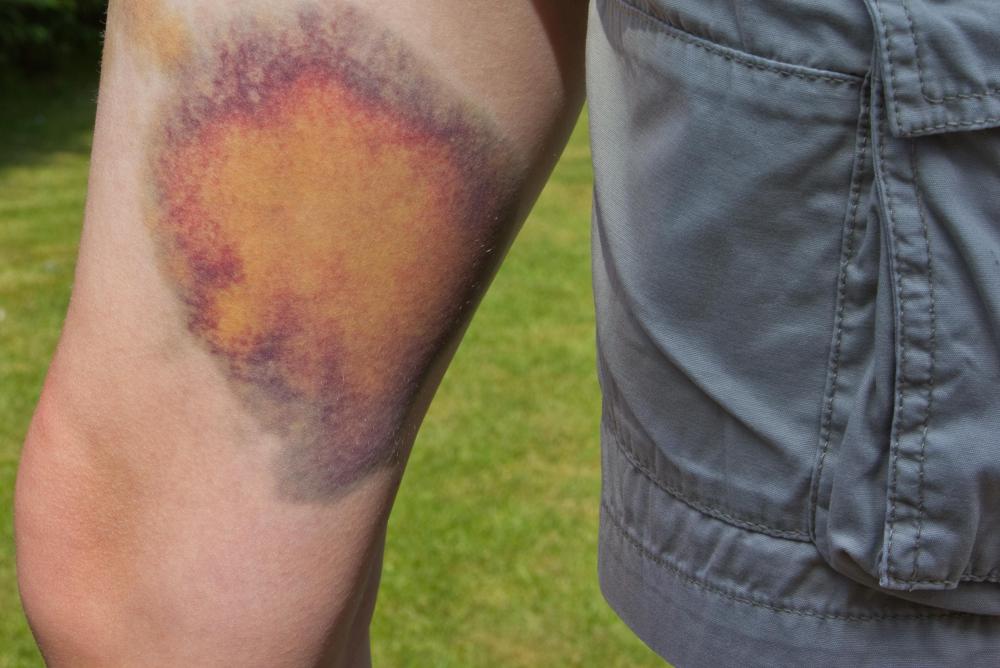At TheHealthBoard, we're committed to delivering accurate, trustworthy information. Our expert-authored content is rigorously fact-checked and sourced from credible authorities. Discover how we uphold the highest standards in providing you with reliable knowledge.
What is the Peritoneal Cavity?
The peritoneal cavity is the fluid-filled gap between the wall of the abdomen and the organs contained within the abdomen. The cavity consists of the visceral and the parietal peritoneum. Both are a smooth membranes which excrete fluid. The visceral peritoneum is the inner layer of the membrane which wraps around the internal organs of the abdomen. The parietal peritoneum is the outer layer attached to the wall of the abdomen.
The peritoneal cavity contains the pelvis, stomach, spleen, gall bladder, liver and the intestines. The fluid contained in the peritoneal cavity exists to lubricate, or reduce wear and tear, the tissues and organs in the abdomen during digestion. It contains anti-inflammatory properties such as antibodies, white blood cells and electrolytes.

Problems with the peritoneal cavity can occur when there is an increase in fluid accumulation. This excess fluid, called ascetic fluid, can lead to ascities. Ascities, the accumulation of fluid, is a common byproduct of severe liver disease such as cirrhosis. Cirrhosis is a chronic liver disease which creates scars and resulting lumps as the tissue heals.

Excess fluid in the peritoneal cavity can create a distended or swelled abdomen. This can produce increasing pressure on the structures contained in the area, including the diaphragm. The diaphragm is a muscle sheet involved in breathing located under the rib cage. This force against the diaphragm can create difficulties with breathing.
Other problems associated with fluid buildup in the peritoneal cavity include bruising, swelling of the legs, and hypertension, commonly known as high blood pressure. Treatment consists of management of fluids through water restriction or diuretics. Diuretics, or water pills, are a medication designed flush excessive fluids out of the body by producing urine output.

In severe cases of excessive fluid, aspiration, the removal of fluid through a needle, may be necessary. For recurring fluid abnormalities, a shunt may be required. A peritoneovenous shunt is a device to maintain an opening in the peritoneal cavity to allow for multiple or continuous draining of excessive fluids without the need to insert a needle every time.

A complication which can arise with fluid buildup and treatment procedures is called peritonitis. Peritonitis is the inflammation or the swelling of the peritoneum. This condition can also be brought on by a fungal or bacterial infection of the membrane. Medications to kill the infection and possible surgery to remove infected areas of the peritoneum may be necessary to treat this condition of the peritoneal cavity.
AS FEATURED ON:
AS FEATURED ON:
















Discussion Comments
Are peritoneal cancer and ovarian cancer usually connected?
I had one patient who really went through the wringer with peritoneal cancer.
She had been going through chemo for ovarian cancer, and then when she came in for her check up, they found evidence of peritoneal cancer.
Unfortunately, the cancer from her ovaries had metastasized to her peritoneum, the peritoneal cavity.
There was nothing that we could do except make her comfortable.
This happened when I was fresh out of med school, and to this day I still remember that woman.
Peritoneal cancer can really difficult to detect, since the symptoms can be really similar to other, less serious diseases.
For instance, one of the common symptoms of peritoneal cancer is the accumulation of fluid in the peritoneal cavity. This is called ascites, but it can be easy to mistake for simple edema or even water retention.
That's why its so important for people to know the symptoms of this cancer, and get checked out by a doctor even if you only suspect that something is wrong.
I just wanted to add that it is very important to pay attention to any symptoms that you may be having, as they may be more serious.
My sister was experiencing a lot of pain in her abdomen. She had nausea, diarrhea, loss of appetite, and gained a tremendous amount of weight. She really became concerned when she was having abnormal bleeding in between menstrual cycles.
Her doctor ran tests because he thought she had ovarian cancer. As it turned out, she had peritoneum cancer. She went through chemo and is in remission now. That was 4 years ago.
I had never even heard of peritoneum cancer.
Always talk to your doctor if you are experiencing any of those symptoms.
Post your comments